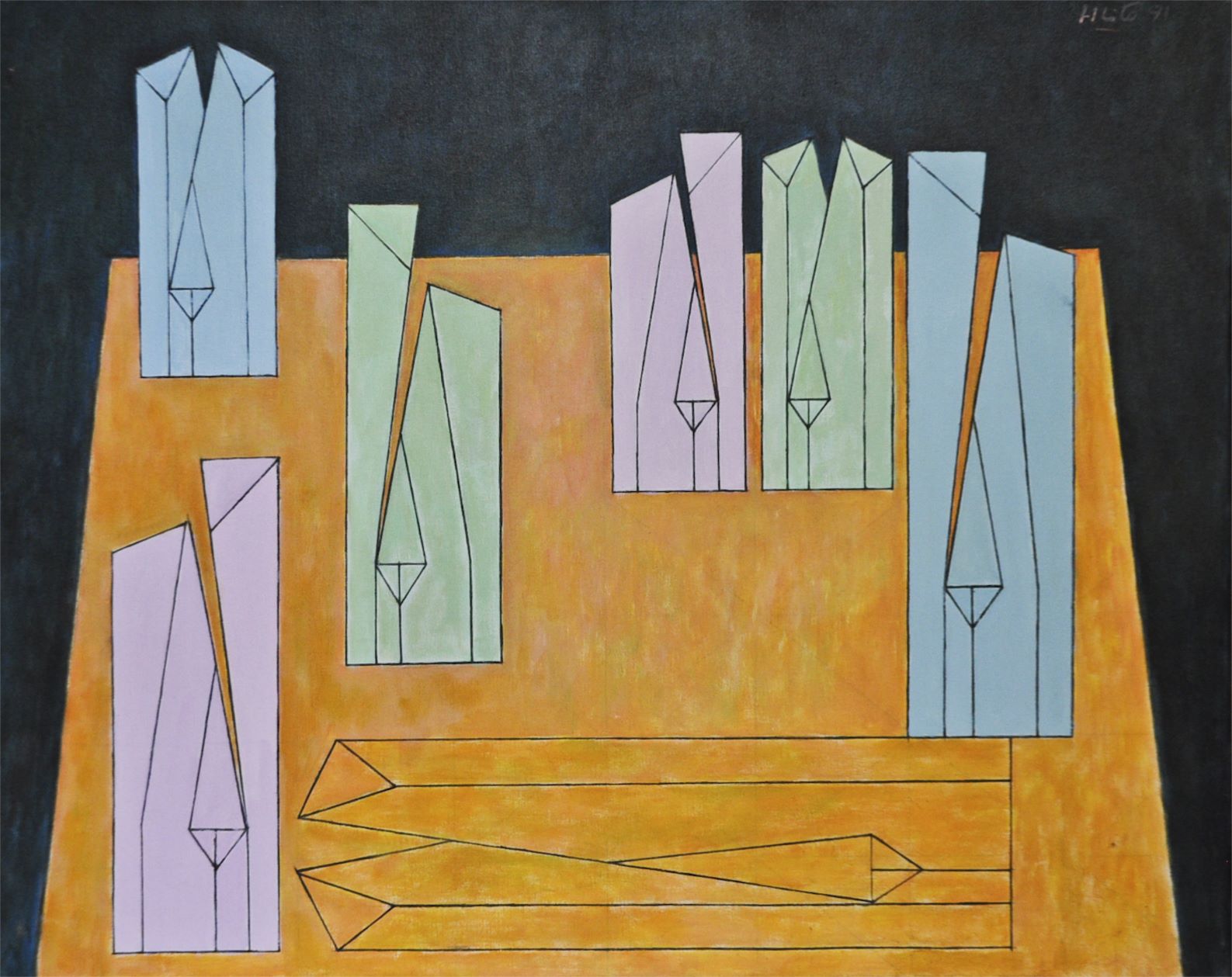Alfredo Hlito was born in Buenos Aires, in 1923. He studied at the National School of Fine Arts. His early works show considerable influence from the Uruguayan Joaquín Torres García, although after a few years he turned towards clearer forms and implemented a more abstract sense of composition. In 1945 he was a co-founding member of the Concrete Art-Invention Association and signed the Inventionist Manifesto in 1946.
His austere and personal style is maintained throughout much of his work. During the specific period (1945-1955) he wrote prolifically about the problems of this type of abstraction, texts that were compiled in 1995 by the National Academy of Fine Arts.
He participated, along with other members of the Concrete Art-Invention Association, in the Salon des Realités Nouvelles in Paris, as well as in the exhibition Nuevas Realidades, presented at the Van Riel Gallery in Buenos Aires, both held in 1948.
In 1951 he collaborated with Tomás Maldonado in the founding of the magazine Nueva Visión. In 1954 he received the Acquisition Prize at the II Sao Paulo Biennial and, the following year, he participated in the XXVIII Venice International Art Biennial.
In 1964 he moved to Mexico, where he lived until 1973. Since 1984 he has been a Full Member of the National Academy of Fine Arts. In 1987 an important retrospective exhibition of his work, Alfredo Hlito. Pictorial work 1945/1985, held in the National Museum of Fine Arts.
Among the main group exhibitions in which he participates are Vanguards from the 1940s. Concrete Art-Invention. Madi art. Perceptism at the Eduardo Sívori Museum in Buenos Aires (1980), Arte Concreto Invención 1945. Grupo Madí 1946 at the Rachel Adler Gallery in New York (1990), in the exhibition Art from Argentina 1920/1994 inaugurated at the Museum of Modern Art in Oxford in 1994, a traveling exhibition, which after touring several European countries, ended its journey in 1995 at the Borges Cultural Center in Buenos Aires.
He died in 1993.


 Hlito Alfredo
Hlito Alfredo